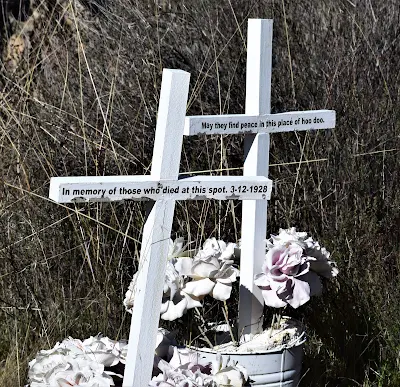As with all stories – let’s start at the beginning.
At fifty-five years of age, Job Harriman had had it with his law practice and his political aspirations. The defeated California candidate for governor with the Socialist Labor Party in 1898, and the defeated Vice-Presidential candidate for the United States with the Democratic Socialist Party in 1900, and twice defeated for mayor of Los Angeles, Harriman knew a change of scenery was needed.
So, in 1913, the avowed socialist decided he could build a community where all worked together, to make a better tomorrow.
 |
| He lost that race, as well as all others |
And who wouldn’t like those sort of promises?
What Harriman needed was a place to put down roots for his desire of everyone living in harmony with each other, without disagreements or turmoil.
Hmmm, most people can’t get two hours of that at a family Thanksgiving dinner.
Anyway, that paradise was approximately 45 miles northeast of the city of Los Angeles, in the Antelope Valley. Utopia had been waiting for a visionary and Harriman was that dreamer, thus, his socialist enclave would become a reality on May 1st, 1914.
But first Harriman needed money to purchase the nearly 9,000 acres in the unincorporated area of Los Angeles County, in the town of Llano.
This is where his friend and socialist banker, Gentry P. McCorkle, from the city of Corona, came into play. Socialist banker? That seems like an oxymoron. But in the book, Bread and Hyacinths: The Rise and Fall of Utopian Los Angeles (Paul Greenstein, etal, 1992), Harriman is quoted as proposing his dream to McCorkle, “If you join me and a few other of my friends, we will build a city and make homes for many a homeless family. We will show the world a trick they do not know, which is how to live without war or interest in money or rent on land or profiteering in any manner.”
McCorkle was in, and Llano del Rio was soon up and running. Of course, being in the High Desert, there was a need for water, but Harriman and McCorkle had also purchased the water rights from the Mescal Land and Water Company, which had control over most of the water from Big Rock Creek. This stream, active for much of the year, got its water from the San Gabriel Mountains to the south and should be plenty to sustain a thriving colony. Or so they assumed.
In Harriman’s magazine, The Western Comrade, large advertisements went nationwide inviting like-minded individuals to this sparsely populated but beautiful location in Southern California. He touted how the land would be a bountiful mecca for all sorts of agricultural products.
There were some catches before a person could become a member of the commune – and, isn’t there always a catch in paradise?
First, a person had to believe in the tenets of socialism. Second, the person had to have three socialist references. Third, you had to purchase two thousand shares of the Llano del Rio Company at a dollar a share. And fourth, you had to be Caucasian – won’t touch that last requirement here.
 |
| Rules? Comrade Beyer says, we don't need no stinking rules |
Simple math, one dollar a day to the loan debt, the other daily amount for living expenses provided by the company, and the leftover of an individual wages went into a general account for the community. At times of surplus, all would share in the profits from the combined work.
Turned out, there never seemed to be much of a surplus at all.
 |
| I paid a dollar a day, and didn't even get a roof over my head |
Distrust and accusations started erupting at Llano del Rio between various group members. Some like the Brush Gang, who had private meetings outside (thus the name), complained the board of directors treated themselves better than the rest of the community. True or not, mistrust creeped in.
It seemed, to paraphrase George Orwell, all comrades were equal but some comrades were more equal than others.
By the end of 1917, most members had moved away and in 1918, Llano del Rio filed bankruptcy. Many of the original members, including Harriman had relocated to New Llano, in Louisiana to start over at the end of 1917. That dream also ended in 1937.
 |
| The dream kind of went up in smoke |
 |
| Remaining walls for community quarters |
We agreed. It’s interesting to walk among the concrete and rock remains of what was once touted as a community for all and which in reality became a community for none.









